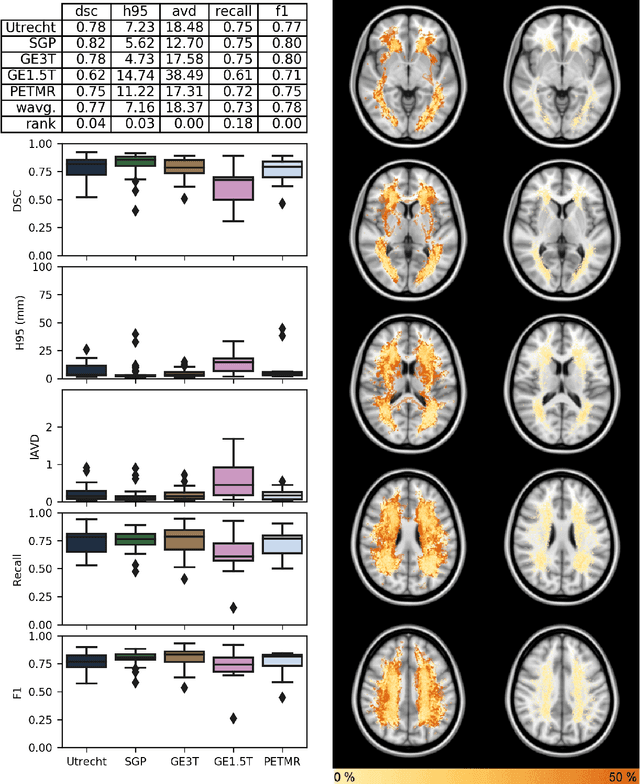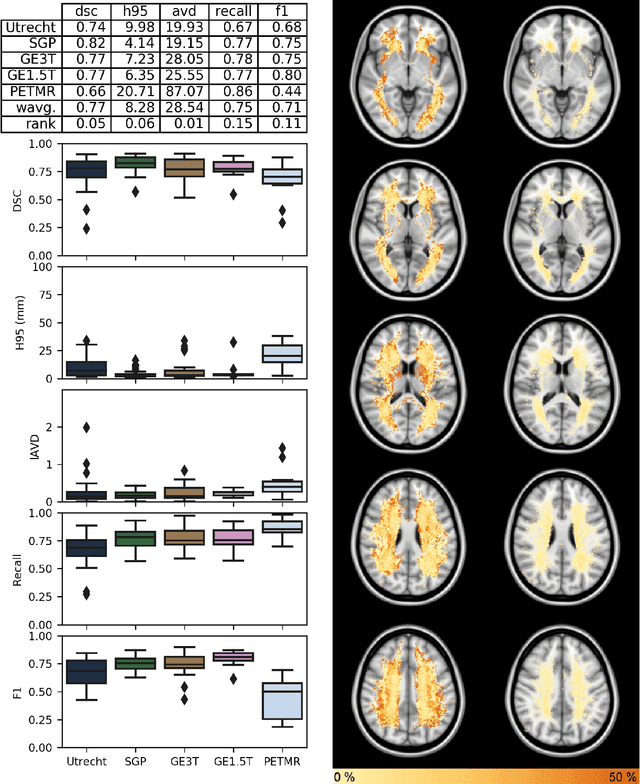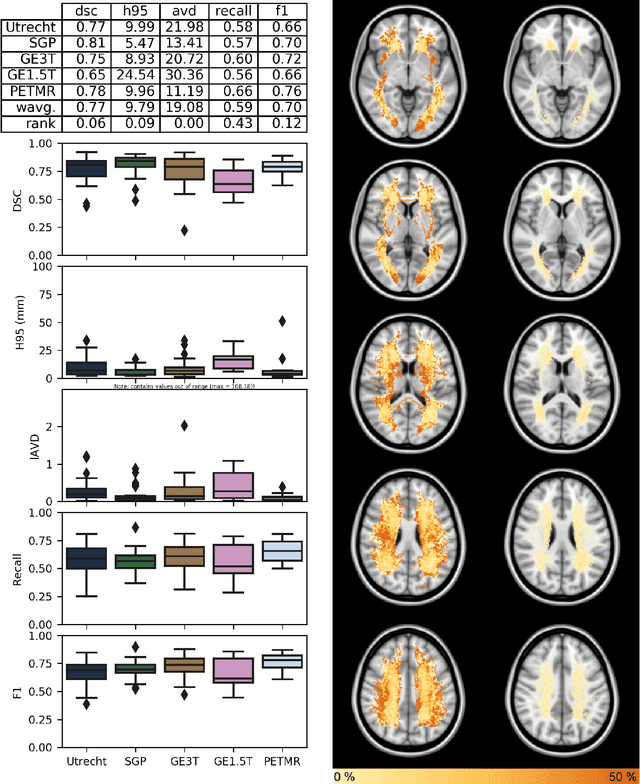Christopher Chen
Energy Efficiency Tradeoffs for Sub-THz Multi-User MIMO Base Station Receivers
Feb 16, 2022Abstract:Sub-terahertz (sub-THz) antenna array architectures significantly impact power usage and communications capacity in multi-user multiple-input multiple-output (MU-MIMO) systems. In this work, we compare the energy efficiency and spectral efficiency of three MU-MIMO capable array architectures for base station receivers. We provide a sub-THz circuits power analysis, based on our review of state-of-the-art D-band and G-band components, and compare communications capabilities through wideband simulations. Our analysis reveals that digital arrays can provide the highest spectral efficiency and energy efficiency, due to the high power consumption of sub-THz active phase shifters or when SNR and system spectral efficiency requirements are high.
Standardized Assessment of Automatic Segmentation of White Matter Hyperintensities and Results of the WMH Segmentation Challenge
Apr 01, 2019



Abstract:Quantification of cerebral white matter hyperintensities (WMH) of presumed vascular origin is of key importance in many neurological research studies. Currently, measurements are often still obtained from manual segmentations on brain MR images, which is a laborious procedure. Automatic WMH segmentation methods exist, but a standardized comparison of the performance of such methods is lacking. We organized a scientific challenge, in which developers could evaluate their method on a standardized multi-center/-scanner image dataset, giving an objective comparison: the WMH Segmentation Challenge (https://wmh.isi.uu.nl/). Sixty T1+FLAIR images from three MR scanners were released with manual WMH segmentations for training. A test set of 110 images from five MR scanners was used for evaluation. Segmentation methods had to be containerized and submitted to the challenge organizers. Five evaluation metrics were used to rank the methods: (1) Dice similarity coefficient, (2) modified Hausdorff distance (95th percentile), (3) absolute log-transformed volume difference, (4) sensitivity for detecting individual lesions, and (5) F1-score for individual lesions. Additionally, methods were ranked on their inter-scanner robustness. Twenty participants submitted their method for evaluation. This paper provides a detailed analysis of the results. In brief, there is a cluster of four methods that rank significantly better than the other methods, with one clear winner. The inter-scanner robustness ranking shows that not all methods generalize to unseen scanners. The challenge remains open for future submissions and provides a public platform for method evaluation.
 Add to Chrome
Add to Chrome Add to Firefox
Add to Firefox Add to Edge
Add to Edge